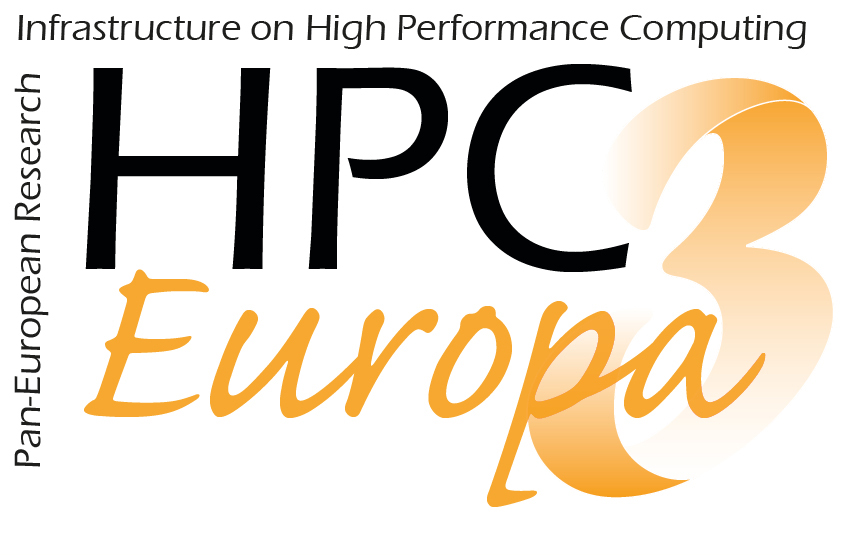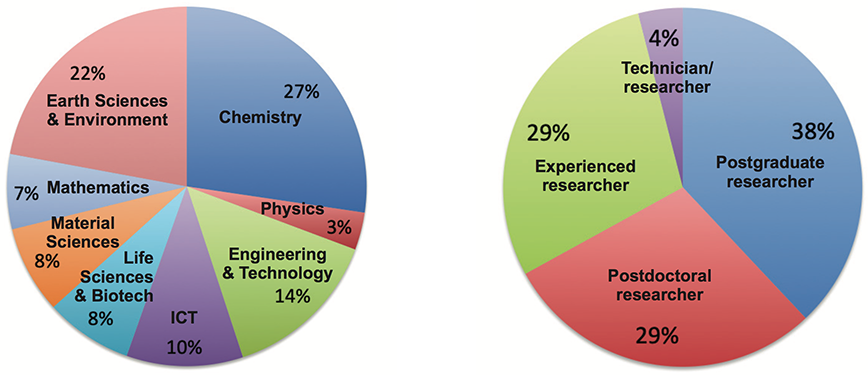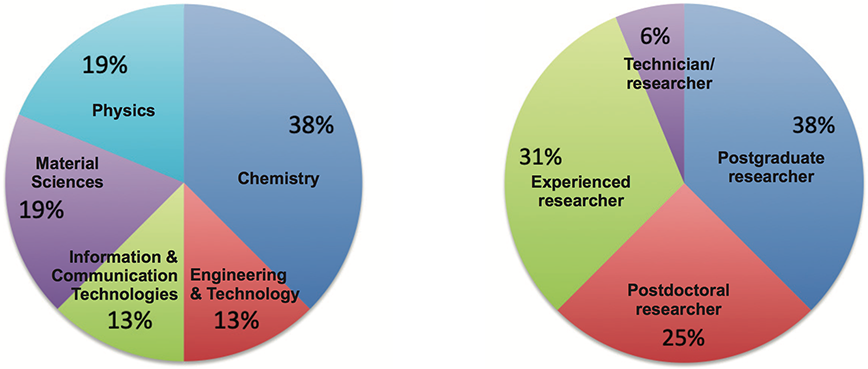HPCE3: 18 Months of Achievements
Lilit Axner, PDC

On the 18th of January 2019, the HPC-Europa3 (HPCE3) project had its first review by the European Commission after 18 months of existence. The total achievements of the HPCE3 project were reported in the 18-month progress report for HPCE3 and are summarised here.
Transnational visits
A total of 266 applications for research visits were received, of which 204 were accepted (which equates to 77%). During the initial 18 months, a total of 143 user projects have been supported – including visits (which were either completed during the period or were still ongoing at the end of the 18 months). Of these, in 4 cases, a majority of the researchers were not working in the EU or an Associate State (1 from Belarus, 2 from Iran, and 1 from the USA). Of the remaining 61 applications that have been approved, 6 visits have been cancelled, and the rest are either underway or will take place during 2019.
The research visitors have come from 27 countries in total, including 19 EU countries, 5 Associated States and 3 other countries. The countries from which the biggest number of researchers have come are Spain, Italy and the UK — all countries with well-established high performance computing (HPC) research groups and with the longest history of running Transnational Access programmes — and therefore likely to be the countries where the research communities have the greatest awareness of the HPCE3 programme.
It is interesting to see the results comparing the users’ scientific backgrounds and their research categories (see pie charts below).

The results of the KTH partner (that is, PDC) in the review were excellent as we have managed to host more than half of the research visitors we had committed to host. It is interesting to compare the scientific backgrounds and the research categories of the visitors to Sweden with the overall picture (see pie charts below).

Research
The HPCE3 project also has a dedicated work package to conduct research in the area of visualization. The aim of this work package is the provision of a lightweight virtualisation technology infrastructure to make it easy to port end user applications to different HPC centres and a mechanism to package single steps of a pipeline in the form of application containers while orchestrating their execution to compose an expected work flow. The team involved in this work package were able to evaluate different container technologies (e.g. Singularity, Docker and Shifter) to improve the portability of applications in order to orchestrate applications packaged as containers (for workload collocation and for benchmarking). They also conducted deeper analyses of not only container technologies but also the tools related to them so as to finish the study – this was done with the objective of proposing an architecture suitable to be deployed in different infrastructures. The results of this work are documented in the Deliverable D12.1 of HPCE3 and can be read at www.hpc-europa.eu/public-documents .
Events
- HPCE3 committed to also foster the HPC culture for small to medium-sized enterprises (SMEs). The network of host centres extends to labs with strong technical-engineering characterizations and expertise. Consequently, the project committed to organizing three SME workshops. The 1st SME workshop, called “Simulation for Automotive Technologies with High Performance Computers (HPC)”, took place on the 26th and 27th of November 2018 in Stuttgart, Germany. The goals of the workshop were to provide a face-to-face communication platform for SMEs to share their experiences of HPC usage for early prototyping and developing and to foster the industrial promotion of automotive applications, services and solutions, as well as to boost direct communication with representatives of European academia and industry. The workshop was a great success with about 30 participants attending from a wide range of different companies and organizations from around Europe. Participants were given the opportunity to learn about cutting-edge innovations for automotive technologies, such as Big Data and Machine Learning.
- The HPC-Europa3 user group meeting, TAM — the Transnational Access Meeting, is an opportunity for the research visitors from each of the HPC centres to come together to present the results of the work they have done during their visits. The first HPC-Europa3 TAM was hosted by EPCC in Edinburgh on Tuesday 23rd October 2018, just at the end of the 18-month reporting period. In total, 40 HPC-Europa3 visitors were registered for TAM 2018. Of these, 25 were registered to give a talk, and 12 presented posters.
For many researchers, TAM represents an early opportunity to present their results, and, for junior researchers with little conference experience, it offers a chance to gain some experience of presenting their research in a relatively relaxed and friendly environment.
More information and statistics about the HPCE3 project can be found at www.hpc- europa.eu/public-documents as this article is only a short summary of the details in the report.